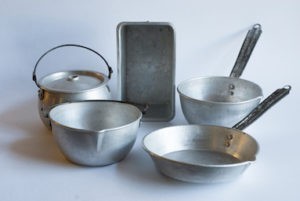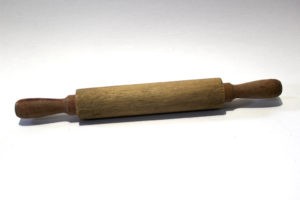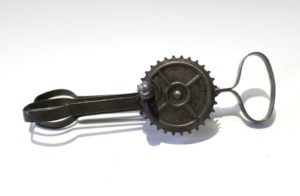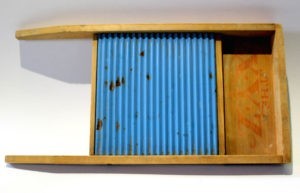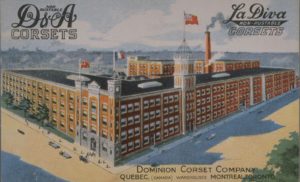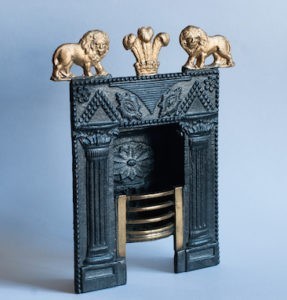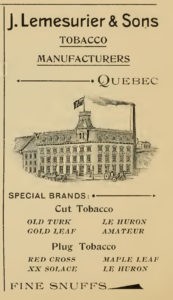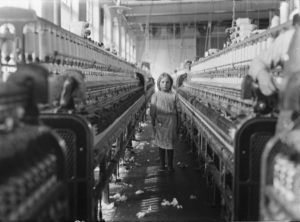It is worth remembering that most children in Quebec City’s English-speaking community did not play with the types of toys shown in this exhibit. In 1901, over half the English-speaking working men in Quebec were manual labourers, and could not afford miniature porcelain toilet sets for their children.
Yet children, being children, still played. They played ball games, variations on tag, and wandered unsupervised while letting their imaginations run wild, sometimes getting up to no good. They played with cards, marbles, jacks, jump ropes, and—if they had artistic relatives—homemade toys.
Poorer children and orphans had less time for play, as they were expected to pull their own weight at an earlier age. In the 1880s, children in Quebec could work 10-hour days in factories. Some labeled cigarette packages at LeMesurier’s tobacco factory for 20 cents a day; others whaleboned corsets at the Dominion Corset factory. Quebec’s orphanages, such as Saint Bridget’s Asylum for Irish Catholics or the Church of England Orphan Asylums for Protestant children, placed out children as live-in domestics or farmhands.
In this light, it is interesting to consider the miniature washboard and miniature kitchen sets that daughters of the wealthy played with. Many of these elite girls would grow up to have servants to cook and clean. Meanwhile, other girls their same age were working with actual washboards, pots, and pans, which they certainly did not see as play items.
-
TOY COOKING SET
Late 19th- early 20th century, unknown origin
Aluminum and tin plate
Stephens Collection 2004-309
Various sizes
-
TOY ROLLING PIN
Early 20th century, likely Canada
Wood
Stephens Collection 2004-308
19.1 x 2.1 cm (diameter)
-
TOY “BETTY TAPLIN” EGG BEATER
Taplin, early 20th century, USA
Metal and wood
Belonged to the Scott and Breakey families
Stephens Collection 2004-307
14 x 4.6 x 4.4 cm
-
TOY WASHBOARD
Late 19th-early 20th century, unknown origin
Wood and metal
Stephens Collection 2004-311
27.7 x 14 x 2.4 cm
-
DOMINION CORSET FACTORY
after 1916, Quebec City
BAnQ-Q, CP 6423 CON
-
ST-BRIGET’S HOME
BAnQ-Q, P547, S1, SS1, SSS1, D1, P476
-
MINIATURE FIREPLACE
John Rickaby, 1830s-1840s, Quebec City
Cast iron and brass
Stephens Collection 2004-190
25 x 21.6 x 4.9 cm
-
J. LEMESURIER & SONS AD
, Exposition de Québec: souvenir containing the official program of the exposition
Quebec City, 1894
- Lewis Hine, A Little Spinner in the Mollohan Mills, Newberry, SC, 1908, Library of Congress, nclc.01451
